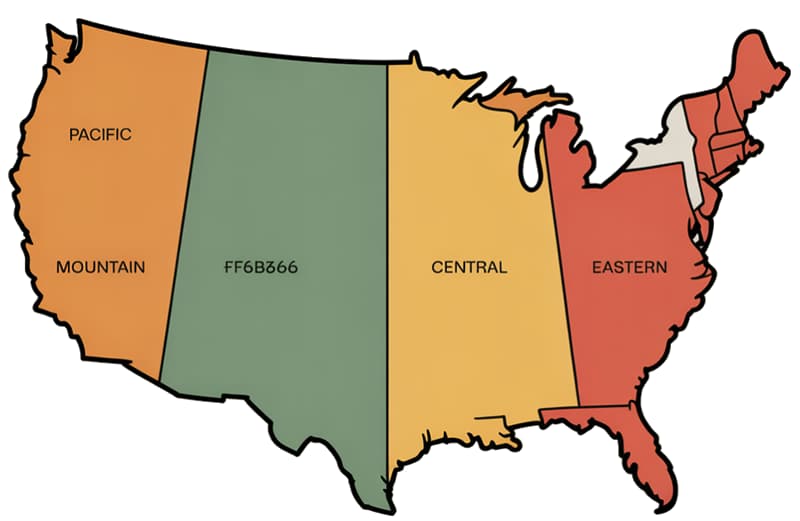Amy and I have known each other for over 15 years, so when she told me she was bringing the TimeZone strategy to Aeromir, I was genuinely excited. This isn't some brand new, untested approach – Amy originally launched TimeZone back in 2019 with another firm, and it quickly became one of her most popular strategies. Now it's getting a complete refresh for today's markets, and I'm honored to host it here.
If you're already familiar with Amy's work – maybe you're trading the A14 or took her TimeEdge workshop – you know she doesn't release strategies lightly. Everything she teaches has been thoroughly tested across different market environments. The TimeZone is another arrow in the quiver, and it's a sharp one.
What Makes TimeZone Different
Here's something that caught my attention during Amy's presentation: this strategy combines positive theta and positive Vega. That's rare. Most income strategies bleed when volatility spikes, but TimeZone actually benefits from it. Amy walked through the 2020 market crash in detail – you know, those limit-down days that made everyone's stomach churn – and the strategy held an 80% win rate during that chaos.
The structure itself is straightforward for anyone who understands time spreads. It's a calendar combined with a credit spread, set up as a market-neutral weekly trade. Average hold time is about five days. You're in and out before the market mood has time to completely shift against you.
What I appreciate about this approach is the flexibility. You can trade it once a month and stay out of the market 75% of the time. Or trade it every other week. Or if you want more activity, put on a position weekly. The strategy adapts to your style and schedule, which matters when you're trying to build something sustainable.
Watch Amy's Full Presentation
Last week, Amy walked through the complete TimeZone strategy in detail. She covered the performance results, showed actual trade examples from different market conditions, and answered questions from students. If you want to see exactly what this strategy looks like in action, the full presentation is worth watching:
You can download the presentation slides to review the performance data and examples at your own pace.
The Performance Numbers Tell the Story
Amy showed nearly a decade of backtesting, and I wasn't surprised by the results. She's taught quite a few strategies over the years, and they've all been excellent. But it's still impressive to see the consistency.
From 2016 through 2019, trading just one week per month delivered a 75% win rate. During the 2020 crash and recovery – trading every week in March to really stress-test it – the strategy notched three wins and one loss that month, ending with a net profit despite the chaos. For 2025 year-to-date through August, trading every single week produced an 80% win rate with over 100% returns in eight months. Average profit per trade on a two-lot position runs around $400.
The equity curve Amy showed was remarkably smooth. No massive drawdowns that wipe out months of gains. Just steady, consistent growth across bull markets, bear markets, and everything in between.
How TimeZone and TimeEdge Fit Together
If you're wondering about the difference between TimeZone and TimeEdge, here's how I see it: TimeEdge is simple and structured with very specific rules. One calendar entry, one max adjustment, clear guidelines. It's perfect if you want something straightforward that doesn't require much monitoring.
TimeZone is more robust. It has more adjustment options, more flexibility, more control. It's for traders who want to be a bit more proactive with their positions. Amy keeps the adjustments simple – she typically uses just two or three tactics – but you have options when the market moves against you.
Both strategies use time spreads as their foundation, so if you've already taken TimeEdge, this workshop builds naturally on those concepts. You'll learn additional techniques that you can apply to TimeEdge trades as well. It's not either/or – they complement each other nicely.
Who Should Take This Workshop
Let me be direct about this: you should be familiar with basic vertical spreads and time spreads before jumping into TimeZone. This isn't for people just discovering options trading. You need a solid understanding of option Greeks and some real experience putting trades on. If you're still learning what delta and theta mean, start there first.
But if you've got that foundation and you're looking for a weekly income strategy that doesn't chain you to your screen, this could be exactly what you need. It's particularly good for traders who want more control over their positions than a strict rules-based approach offers.
When I was teaching Air Force pilots how to fly, I had my own methods of accomplishing things, and other instructors had theirs. The students had to take what worked for them from me and my fellow instructors and build their own basket of techniques. It's the same for any complex skill, including trading. This workshop gives you another set of techniques and ideas you can use alone or in combination with other trades.
Even if you're already trading the A14 or other strategies successfully, it's always good to have more techniques in your basket. You can combine these approaches with other trades too – it's not only for time spreads. Amy herself primarily trades the A14, but she puts TimeZone trades on in her own account as well.
What You'll Learn
Amy structured this workshop to be comprehensive without overwhelming you. The first class covers the core strategy and why it works, including important details about term structure differences between the Russell 2000 and SPX. That's valuable information even if you never trade TimeZone – understanding how volatility behaves differently across indices helps with any calendar-based strategy.
Then she walks through entry rules, multiple adjustment options (again, kept simple), and exit management. You'll see step-by-step trade examples across bullish, bearish, and choppy markets. Amy doesn't just show you the winners – she breaks down losing trades too, so you understand what didn't work and why.
The workshop includes Q&A sessions after each class, a tips and tricks session covering time-saving techniques, access to a private community where you can connect with other traders, and a bonus Q&A scheduled 30-60 days after the live sessions. That delayed Q&A is smart – it gives you time to absorb the material and come back with real questions from actually working with the strategy.
Everything gets recorded, so if you can't make the live sessions, you won't miss anything. Though I always recommend showing up live if you can – that's when you get your specific questions answered.
Workshop Details and Pricing
The first class starts Thursday, October 9th at 4:30 PM Eastern – right after the market closes. Amy's offering special launch pricing at $497, which saves you $200 off the regular price. If you want both TimeEdge and TimeZone together, the bundle runs $997, saving you about $400.
All sessions will be recorded and available if you can't attend live. You'll also get access to the private community and historical trade logs showing all the backtesting Amy discussed in her presentation.
Ready to Add TimeZone to Your Trading Arsenal?
I've watched Amy develop and refine strategies for over 15 years. The TimeZone strategy has a proven track record across nearly a decade of different market conditions. Whether you're looking to diversify beyond the A14, build on what you learned in TimeEdge, or add a market-neutral weekly income strategy to your approach, this workshop delivers the complete framework.
If you're wondering whether this course is worthwhile, consider that it's always good to have more techniques in your basket to use when you need them. You never know when a particular approach will be exactly what the current market environment calls for.
You can explore all of Amy's strategies and workshops at aeromir.com/amy.


